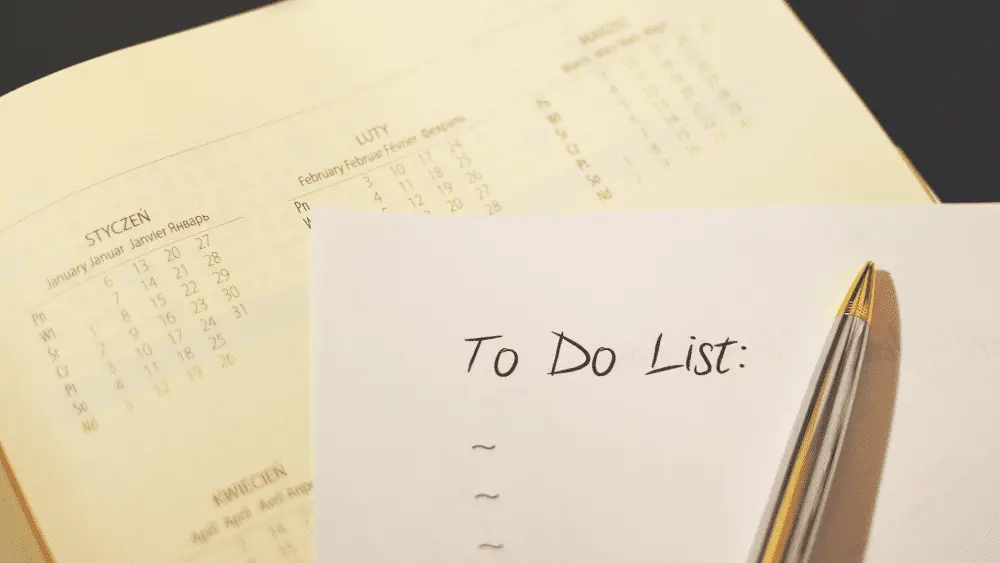
The final weeks before moving into your new home will be filled with anticipation and possibly a moment or two of anxiety as you get ready to leave one home and embark on life in your new residence. The more organized you are and the more you understand about what to expect during your move, on your settlement day, and afterwards, the easier the entire experience will be.
Getting Ready to Move

If you’ve been in close communication with your builder, you should have a good idea about when your home will be ready. Glitches can still occur, though, even at the end of the building phase, such as an ice storm that stops workers from getting to the construction site or some other delay. While you’re waiting — most likely on pins and needles with excitement — you should be preparing for your move. Unlike the quiet period of the past six months or so while you were waiting for the contractors to do their work, you should have plenty to do once your home is a few weeks away from completion.
A fun yet practical step you can take is to print out the floor plan for your new home and then mark it up so that you’ll know ahead of time where everything will go when you’re ready to move. This can help you make decisions about what furniture to keep and to plan what you may need to buy for your new home. At the same time, if you hire movers, this will make their job easier, too, as you can share the floor plan with them on move-in day. You may even want to print several copies that can be posted in your new home while the movers are unloading your belongings.
Line Up a Mover

Even if you don’t have an exact date for your move, you can start the process of choosing a professional mover, unless you decide to convince friends and family to help instead. Get recommendations from your real estate agent, friends, and the sales consultant in your new community. You should check each mover’s references and make sure the moving company is licensed.
An important part of arranging your move is to understand what kind of protection the moving company provides for lost, damaged, or stolen items. Federal and state regulations impact your coverage if you’re moving from one state to another; if you’re moving within your state, state regulations are in place for your protection. Interstate movers must offer both full valuation protection and released value coverage. Full valuation protection is more costly, but this coverage requires your mover to repair or replace any lost or damaged goods or give you cash for the cost of the repair or the current market replacement value of your item. Your moving company could limit its liability for some items of special value such as silver or jewelry, so be sure you understand those limits before your move. Moving companies typically provide released value coverage for free, but the movers’ liability is no more than sixty cents per pound per article.
You need to carefully look at the protection your mover offers in case something happens to your belongings. Some movers also offer optional liability insurance on top of their released value coverage; you can also purchase insurance from a third-party insurance company. Check with your homeowners insurance on your current home and your new home, as well, to see if your possessions are covered in transit by that policy.
When you have a sense about when your home is likely to be ready, you can go ahead and get estimates from one or two moving companies and set a tentative moving date. Once your builder tells you when the Certificate of Occupancy should be ready, you can lock in a date with the mover.
Movers typically offer to sell you boxes and supplies like bubble wrap and packing tape, but you can usually find these items more cheaply by asking for free boxes at local retailers and picking up packing materials at a discount store. If you prefer, you can pay your moving company to do the packing for you, but usually it’s best to do this on your own if you have the time and energy because you’re more likely to use your packing time to weed through your possessions and decide what to take, what to sell, and what to donate. You can sell items online on sites like eBay or organize a yard sale.
Start Packing

You can start packing as early as you want — in fact, the earlier you start, the better off you’ll be when you get closer to your move. The smartest way to get started is to do a complete inventory of your home. Not only will this help you identify what you want to move and what you may need to buy for your new home, but you’ll also have this information at your fingertips for the movers and for your homeowners insurance.
There are several ways to take inventory, including just making a list with pen and paper. You may want to take photos or videotape your belongings for insurance purposes or you can use one of the many apps available for inventory, such as MyStuff2, Home Inventory, or Delicious Library. Your insurance company may have an app, too.
The first items you should tackle are the things that are already packed away: your storage boxes. Go through any boxes you have in a garage, basement, attic, or paid storage unit and see which items you really still want or need. Hopefully, you can eliminate or consolidate a few items. Seasonal things such as holiday decorations or ice skates or pool toys that you’re not using can be packed away, too. Decorative items can be packed early, as well, because once you know you’re moving, you don’t necessarily need to have your rooms looking perfect. One caveat here: if you’re selling your home, make sure you consult with your real estate agent or a home staging expert about the best way to pack unnecessary items and still showcase your home.
As you pack, make sure you label boxes according to the room or closet where each box should be placed. You may think you’ll remember what items are in different boxes, but by the time you reach your new home and are confronted with dozens of boxes, you’ll never be able to know what’s in them without opening them.
After you’ve packed up your stored and out-of-season items, you can begin to pack your books, games, and toys, if you have kids. Keep a few favorites out for the next few weeks. Next, pack up your closets. Your mover will bring you wardrobes for your clothes and will likely take your dressers as they are, but moving is a great time to sort through everyone’s clothes and donate or sell items that are not being used. Pack up your shoes, scarves, and other accessories that you won’t need and then tackle the linen closet to pack away extra sheets, towels, and blankets.
You should designate one box that will hold the items you’ll need on the first day you arrive at your new home. This box should include towels, toilet paper, paper towels, paper plates and plastic utensils, sheets for each bed that will be used, soap, and any other miscellaneous items that you may need as you make the transition from one home to another. Save room for your smartphone chargers and medicines that you take regularly. Keep a laundry bag available for the clothes you wear the day before and the day of your move.
The closer you get to your move, the more you can pack away. You may want to keep a few basic pots and pans, mugs, silverware, and dishes out for a few weeks along with your coffeemaker, but you can pack up your fondue pot and other specialty items earlier. During the final few days in your home, you may find it easier to switch to paper plates so you can pack your dishes.
In addition, as your move approaches, it is vitally important to keep all the documents related to your home purchase and your financing easily accessible, along with all of the receipts and paperwork related to your move.
Update Your Addresses- Everywhere

To ensure your mail gets delivered to your new home, you can visit your nearest post office location for a change of address form or go online at USPS.com to update it. You also need to change your address with the local Department of Motor Vehicles, your credit card companies, any other creditors such as a student loan or personal loan, your bank, your voter registration board, and your insurance companies. Your car insurance premiums may change because one factor in the amount charged is the location where you keep your car and another is your commute, which is likely to change when you move. You’ll need to notify any publications you receive at home such as a newspaper or magazine, as well as the utility companies when you’re leaving your current home and moving into another. Your builder has been using utilities in your home during the final phases of construction, so you’ll need to work with the builder to transfer the utilities to your name at the appropriate time.
If you have children, this is a good time to look into child care or to register them for their new school. You may need to get transcripts sent from their current school to a new school, so give yourself time to make these arrangements.
Check on Insurance
Now that your settlement date is approaching, it’s time to reconnect with the insurance company you chose to make sure your coverage is in place on your closing day and that the insurance company will provide you with proof of coverage to bring with you to the settlement.
While you’re thinking about protecting your home with insurance, you should also consider whether you want a security system on your new home. Many new homes come equipped with a security system that you’ll need to activate in order to have protection; if your home doesn’t have a security system, it might be a good idea to look into the option of setting one up so it’s in place when you move.
Get in Touch With Your Lender

In addition to feeling secure in your new home and community, you need to be secure and confident about your finances. You can use the period while your home is being built to prepare financially for homeownership for the first time or for the transition from one home to another.
When your builder tells you that your home is almost complete, you should contact your lender so that the final loan papers can be drawn up. If you’re working with your builder’s preferred lender and title company, the builder will likely be in touch with them to schedule your settlement. If you’re choosing your own title company to handle the closing, you’ll need to coordinate the date with your lender and the builder’s representatives.
Be ready to respond quickly to your lender and to the title company representatives and attorneys if they contact you with requests for information or additional paperwork. Your lender will recheck your credit and verify your employment just before the closing. If you’ve made any unusual deposits over the past few months, essentially anything other than your paycheck, you’ll need to provide your lender with a paper trail to prove the origin of the money.
If you’re selling a home before you move into your newly built home, you’ll need to coordinate the settlements on each house so that the funds from the sale of your current home are in place and available before the settlement on your new home. Your real estate agent, lender, and settlement company can help you with this process.
What to Expect on Settlement Day

By the time you’re close to closing on your home, you should have made the decision about whether to use the title company preferred by your builder or a title company of your choosing to handle the closing. Your builder typically would prefer that you use a settlement company that they’ve worked with in the past because they know that this company understands the timeline of building a new home and can coordinate the settlement more easily than a company with less experience with new construction.
“The process of buying and closing on a newly built home is a little different from an existing home, primarily because you’re usually working from a contract provided by the builder,” says Todd Ewing of Federal Title & Escrow in Washington, D.C. “It’s a good idea to have a Realtor or a real estate attorney review the contract just to make sure your interests are represented. If you’re offered a credit toward closing costs for the use of the preferred lender and title company, it’s not necessarily a bad idea to use the company, but you should make sure you’re comfortable that the contract protects you.”
In addition to having your sales contract reviewed by an attorney, Ewing suggests paying a seasoned attorney to review the title search and title survey before your closing, and then actually having the settlement with the builder’s preferred company. Settlement day for a newly built home typically takes place at the new home community’s sales office, Ewing says.
Your lender, your builder, and your real estate agent should present materials including a sample HUD-1 Settlement Statement to you before the settlement so you know what to expect; the title company could also provide paperwork before the closing day so you’re better prepared. You can ask to see sample documents and request your real estate agent or a title company representative to point out the areas that require close scrutiny.
Your lender should have provided you with a Good Faith Estimate when you applied for the loan on your new home. The Good Faith Estimate includes information about the terms of your loan such as the interest rate and monthly payments, as well as an estimate of the closing costs you must pay. While some builders offer to pay closing costs as an incentive for buyers, in many cases you’ll need to pay closing costs yourself. These costs include legal fees, title searches, title insurance, taxes, recording fees, and document preparation fees. Your lender should go over the closing process with you when you apply for a loan, so be sure to ask questions at that time if you don’t understand something.
The Good Faith Estimate looks similar to the form you’ll see at your settlement, known as the HUD-1 form. You’re entitled to see that form twenty-four hours before your settlement so that you have time to read it and compare the listed fees to the Good Faith Estimate you received from your lender. If you have any concerns about this form you can contact your lender and your Realtor with questions.
You’ll be signing numerous documents at the settlement, but you should pay careful attention to the following:
HUD-1 Settlement Statement
This document includes all of your charges and credits on the left side of the page and all of the seller’s (your builder) charges and credits on the right side of the page.
Truth-In-Lending Statement
This document provides you with an estimate of the annual cost of your mortgage over the full term, including an amortization page that shows exactly how much you’ll pay in principal and interest during every month of your loan term, and an annual percentage rate (APR) that factors in all of the costs of your loan. Information should be provided here as well about late fees.
Promissory Note
This note should include your loan amount, your loan term, and your interest rate. Signing this paper obligates you to repay the loan.
Deed of Trust
This is the document that pledges your home to be used as collateral for your mortgage and allows your lender to foreclose on your home and sell it if you default on the loan.
An important aspect of the settlement is that your new home will be covered by title insurance. While most people never need to use the protection offered by title insurance, you should understand its function.
Understand Your Title Insurance

“There’s a misconception that a title search and title insurance don’t matter as much on a new home, but the reality is that new homes are often built on recently subdivided land with new easements and are built with lots of subcontractors, so in some ways a new home could be even riskier from a title insurance perspective,” Federal Title & Escrow’s Todd Ewing says. “Title insurance covers everything to do with the title such as making sure that there isn’t some long-ago mortgage on the land that was paid off but not properly released.”
Two types of title insurance are available on homes. The first type, known simply as title insurance, protects your lender up to the value of your loan. So, if you’ve made a down payment of 20 percent on a $300,000 purchase, the title insurance policy protects your lender’s investment up to $240,000. The title company will defend your ownership of the home and protect your lender against any financial loss caused by a “title defect.”
Before a title company provides title insurance, it will do a survey on the property to make sure that there aren’t disputes over who owns the land or any liens against the property. Sometimes title defects happen when a will hasn’t been properly probated or from simple human error when a deed for the land was improperly recorded at the county courthouse.
In addition to the title insurance your lender requires, you can also purchase owner’s title insurance or enhanced owner’s title insurance that directly protects you up to the value of the policy.
“I recommend that new homebuyers purchase enhanced owner’s title insurance because it covers any possible mechanic’s lien stemming from an unpaid bill, issues with improper permits, or even mistakes in the subdivision that aren’t covered under a standard title insurance policy,” Ewing says.
Taxes and Homeownership

In addition to the legalities of holding title to your new home, as a homeowner your tax situation will change — usually for the better. While you’ll be paying property taxes as part of your monthly mortgage payment, you’ll reap the benefits of tax deductions on your state and federal income tax returns.
“When your builder pulls the permit to begin construction on your home, the county will establish your property tax assessment based on the size and location of your home and the type of property,” says Anis Blemur, a registered tax professional in Miami, Florida. “Property taxes are paid ahead of time rather than retroactively, so if you move into your new home in June, you’ll need to pay property taxes for the remainder of the year.”
Most lenders require you to set up an escrow account for your property taxes. You’ll pay a portion of your taxes into that escrow account each month and then your mortgage lender will pay the property tax bills when they arrive.
The more exciting part of taxes and homeownership is the ability to increase your income tax deductions.
“The first time you file income taxes after you become a homeowner, you should fill out Schedule A on your federal income taxes to itemize your deductions,” Blemur says. “You can deduct your property taxes, your mortgage interest for the year, and, if you paid points on your loan when you bought it, you can deduct those, too.”
If you made a down payment of less than 20 percent on your home and took out a conventional loan or if you’re financing your purchase with an FHA loan, you may be able to deduct your mortgage insurance payments depending on your income. This tax deduction has been phased in and out of federal law, so be sure to check with the IRS about current rules.
“In some counties and cities there are tax credits available to first-time homebuyers,” Blemur says. “You should ask your lender or a tax expert, or check with the local government website, to see if you qualify for any special credits.”
Organizing Your New Home

Finding a place for your paperwork and your new house keys should be easy in your new home since many newly built homes have been carefully designed with built-in storage, planning desks, and thoughtfully located places to charge your smartphone, tablet, and laptop.
One of the best innovations in recent years in new home design is the “family foyer” or family entrance. This space is often located off the garage or it may have a separate side or back door entrance, but the functionality of this space reflects the way families live. You can usually design this space exactly as you want, with benches to sit on while you and your kids pull off your snow boots or muddy athletic shoes; a cubby where each family member can hang a coat and a backpack or briefcase, and perhaps a tall closet to handle a lacrosse stick, a hockey stick, or even skis. The availability of this space in an area away from where you entertain guests makes it far easier to keep your entire home neat and organized whether you have toddlers or teens.
You can choose to include a planning desk or charging station in the family foyer or in the kitchen, wherever you find it convenient. Depending on the size of your home, you may want a small hobby room or office located off the foyer that you can use to keep crafts organized when you have a young family and then to function as a homework station when the kids get older, and later, to become a reading nook or art studio for your empty nest phase.
Newly built homes often have an oversized pantry, too, either in the family foyer, off the garage, or in the kitchen, where you can store multipacks of paper towels and other bulk items. If you plan on entertaining frequently, this closet or other built-in shelving in your kitchen or dining area can be designed to hold your party platters and extra glassware.
Unpacking your belongings in a home where everything has its place can be far more enjoyable than struggling to fit too many possessions into a place with too few closets. Downsizing homeowners find that a newly built home has more efficiently designed storage space even if it’s smaller than their previous home.
“Moving into an active adult community was a great transition in terms of giving up snow removal and yard work, but it was also a psychological transition to less space,” says Jan Johnson, a buyer in an Epcon Communities development in Columbus, Ohio. “We don’t have a basement anymore so we have to be a bit more Spartan than we were, but otherwise it feels as if it’s almost the same size as our previous home.”
Landscaping Tips

Your newly built home probably came with a landscaping package. If you purchased a condominium, the common areas in your community will be landscaped and maintained by the builder and then by the condo association, but you could still have a private patio where you can have a garden.
Single-family homeowners may have a tiny plot of land of their own or acres to landscape, but most newly built homes include basic landscaping such as a seeded or sodded lawn and some shrubs or a tree or two. If you designed a custom home, your architect probably worked with a landscape designer to create a unified plan for the structure and its surroundings. In either case, you have an opportunity with your new home to develop a plan to add to your landscaping over time so that your property looks lovely today and in the future.
A local nursery can be a great resource for landscape planning. Some offer free advice or charge only a small fee when you purchase plants and trees. An important consideration if you plan to add trees to your grounds is to investigate their rate of growth and eventual anticipated size so that you don’t end up with an overpowering tree that blocks valuable natural light.
Just as you did before you chose options for your home, you should take your time choosing plants for your property. Even if you decide to work with a designer, you should think about the types of plants you like. You can find photos online or drive around your community to take photos of garden designs or individual plants that appeal to you. Think about your level of interest in gardening, too, because if you don’t have the time or desire to maintain your grounds, you’ll either need to hire someone or choose a low-maintenance landscaping plan. Landscapers recommend using native plants because they’re more likely to thrive in your particular climate and therefore will be easier to care for as well as look more natural.
Landscape planning isn’t just about plants, though. You’ll also want to consider how much space you want for entertaining and relaxing outdoors. You may already have a patio or deck in place or plan to add one later, so think about that space and how you want to use it before you plant expensive trees or shrubs. Outdoor fireplaces, fire pits, and kitchens are popular additions to today’s backyards, so you may want to focus on those features before you start planting. Water features, which range from a tiny trickling fountain to a stone waterfall, are also popular, so even if you don’t put one in right away, you might want to think about where one could go in the future.
Light, both natural and electrical, is an important element to your enjoyment of your outdoor space. If you appreciate the full sun flooding into your home and onto your deck, avoid planting trees that will eventually shade the space. However, for those who live in warm weather climates such as Florida or Arizona, planting sun-filtering or shade trees may be preferable. To use your outdoor space in the evenings or for entertaining, you should consider creating a lighting plan that offers enough light for safety and socializing without being so bright that the light disturbs your neighbors or blocks out the night sky.
While many features in the interior of your home will remain the same for years to come, your landscaping will evolve over time. One of the many pleasures of homeownership is the ability to try out new flowers or plant a few vegetables to enjoy or share with your friends and family.
Enjoy Your New Home!

Whether you’re daydreaming about your first tomato crop or looking forward to your housewarming party, you should pat yourself on the back. You did it! You bought a new home.
“When your new home is finished, all you have to do is turn the key and walk through the door —everything is done the way you want it,” KB Home’s Tom Silk says. “You’re not waiting to find the carpet guy to replace the ugly carpeting or waiting for your new fridge to be delivered.”
While you may be surrounded by boxes on move-in day, take a moment to congratulate yourself on a job well done: You’re moving into a home where no one else has ever lived. You’ll be the first to soak in the tub, the first to roast a chicken in the oven, and the first to light a fire in the fireplace. Your design choices have already personalized your home to reflect the way you want to live, and now you’re about to embark on the pleasure of organizing your space and adding those important touches that will make it even more your own.
For more expert advice on buying and building a home, check out the free eBook download of New Home 101: Your Guide to Buying and Building a New Home at NewHomeSource.com.

Michele Lerner is an award-winning freelance writer, editor and author who has been writing about real estate, personal finance and business topics for more than two decades.
 Navigating Finances When Buying a New Home in the US as a Non Resident
Navigating Finances When Buying a New Home in the US as a Non Resident
susan kim
I wish to know more about organizing kitchen, where should drinking glasses be, pots, pans, spices and etc..